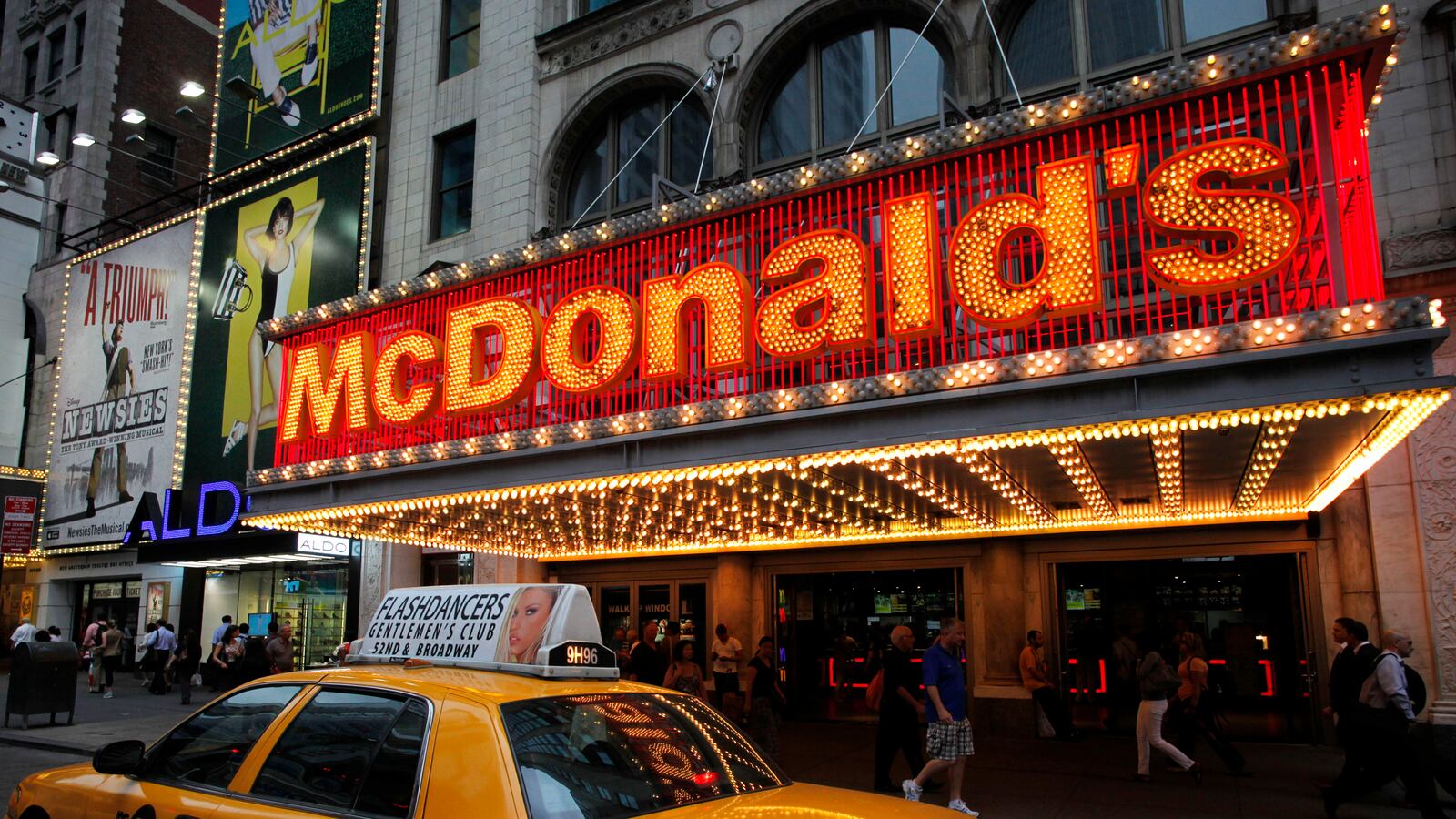At first glance, the concept was thrilling. An Egg McMuffin transformed into a quiche? A Big Mac macaroon?! It was so wrong that it felt right.
And there was so much more. The Invitation-Only McDonald’s Dining Experience, hosted in downtown Manhattan last week, was billed as an “evening of unexpected recipe creations and great conversation,” and it was. Five acclaimed chefs—including Food Network darlings Aaron McCargo Jr. and Dale Talde—were tasked with transforming MickeyD ingredients (eggs, potatoes, hamburger beef) into gourmet dishes. They rose to the challenge admirably, whipping up such concoctions as a a spicy Spanish tortilla and a pumpkin-spice biznut (biscuit plus doughnut). Combined with bottomless glasses of wine and exuberant statements from company execs about their commitment to health, the picture of McDonald’s as a haven of fine food became almost believable.

Almost. After the novelty faded and the realization sunk in that I was simply eating overcooked McDonald’s food, the whole affair left me pining for a steaming serving of fatty French fries.
You can’t blame them for trying. Faced with slowing sales, stiff new competition in the fast-food sector, and a political environment obsessed with wellness, the brains behind the golden arches have launched a major PR push to promote a more “health-conscious” view of the restaurant chain—hence events like the one I attended in New York. But the gimmicky nature of the evening, and the tiny group of journalists it was tailored to, illustrates the huge challenges McDonald’s faces in steering its public image away from a deeply entrenched reputation as a purveyor of delicious decadence.
The truth of the matter is that very few people will never, ever eat a savory bite of slow-cooked hamburger beef coated in a pomegranate blueberry sauce. But they will see critical documentaries like Super Size Me. Or read about videos of mice ransacking hamburger buns. Or hear stories about something called “pink slime” infiltrating their Quarter Pounders.
Greg Watson, a senior vice president of the Menu Innovation Team, says part of the impetus for the gourmet dining experience was to discount “misperceptions” about what is actually in McDonald’s food. “Because we’re big,” says Watson, “McDonald’s has an opportunity to make a greater impact on nutrition.”
That’s true. But because they’re big, they’ve also got a lot of minds to change—and a lot of bad press to combat.
To be sure, McDonald’s has made significant steps to back up its “health-conscious” claims. According to the company, burgers are made with 100 percent USDA-inspected beef; across the menu, sodium has been reduced by 12 percent since 2011; caloric information has been posted on all menus; and advertisements to children now make a point to emphasize activity and nutrition.
At an event hosted by the Bill, Hillary, and Chelsea Clinton Foundation in New York last week, the chain announced it would also add the option of a side salad, fruit, or vegetable with a value meal—a promise it has vowed to complete by 2020. Already, menus feature a selection of healthy options, including egg-white sandwiches and healthy wraps. Additionally, the company says it plans to promote water, juice, and low-fat milk as the drink of choice for kids’ Happy Meals. (Soda will still be available).
But calorie counts can only get you so far in the public-relations game. Take the “Our Food. Your Questions” initiative launched last year, in which the company posted a link on its website inviting customers to ask exactly what goes into any item on the menu. The gesture of transparency backfired when the company was forced to reveal the ingredients in its signature French fries ... all 17 of them.
Then there was the epic PR failure of the #McDstories hashtag. An corporate attempt to foster friendly McDonald’s conversation on Twitter turned ugly last year when users hijacked the hashtag and turned it into bashtag—posting horror stories about the fast-food chain and its cuisine. “I supersized it and then I had to go to the hospital for a simultaneous stroke, heart attack, food poisoning. I almost died,” wrote Elliot Sutter. “I found a hair in my McDouble,” added Livy Christine. “One time I walked into McDonald’s and I could smell Type 2 diabetes floating in the air” wrote Skip Sullivan.
The hashtag was a colossal disaster, earning the title Biggest Social Media Fail of 2012 on the social-media news website Mashable.
Meanwhile, sales amid the health push are relatively discouraging. A look at the McDonald’s annual report for 2012 shows that U.S. same-store sales, the most common barometer of franchise health, increased just 1.9 percent, a number that dropped to 0.2 percent in August of this year. Compared with a 4 percent increase in 2010, when the sinking economy helped McDonald’s to thrive, the numbers are low.
Unfortunately for McDonald’s, it’s not going to get easier. In an age of better, faster, stronger, competition is steep—and getting steeper.
A recent viral ad by Chipotle, a company that McDonald’s once held a majority ownership stake in, exposes the frantic race to be crowned healthiest fast-food chain. Titled the “Scarecrow,” the animated commercial slams big agriculture, factory farming, and animal abuse—with a pledge to “cultivate a better world” through awareness. While there’s no actual mention of McDonalds, it isn’t hard to read the spot as a swipe at the sector’s dominant brand.
So what is McDonald’s next move in the race to a healthy image? Unclear, but here’s hoping it won’t include Big Mac macaroons.




